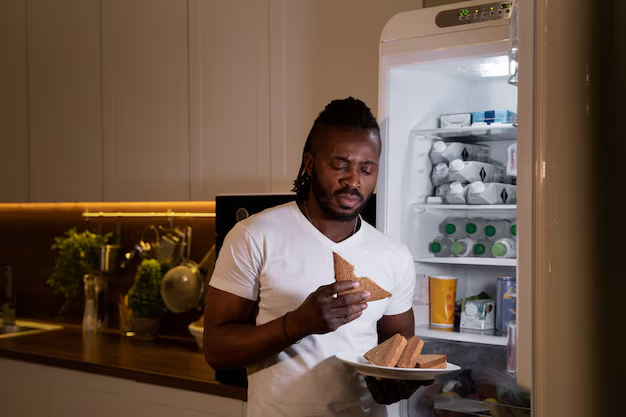Finding the Ideal Temperature for Your Refrigerator: A Comprehensive Guide
Imagine coming home to find your groceries spoiled because the refrigerator wasn't set at the right temperature. It's a scenario no one wants to experience. With proper settings, your refrigerator can preserve food quality, extend shelf life, and ensure safety. Let's explore the ideal temperature for refrigerators, why it matters, and how to manage it efficiently.
🧊 Why Temperature Matters: The Basics
The temperature of your refrigerator is critical for two main reasons: food safety and energy efficiency. An inadequate setting can lead to the growth of bacteria like Salmonella and E. coli, which thrive in warmer environments. These bacteria can cause foodborne illnesses that negatively affect your health. Meanwhile, setting the temperature too low can cause unnecessary energy consumption, increasing your electricity bill and possibly freezing perishables.
Key Takeaways:
- Optimal refrigerator temperatures are essential for food safety and quality.
- Efficient temperature settings can help save on energy costs.
📏 The Ideal Temperature Range
What is the recommended temperature for a household refrigerator? Most experts agree that the ideal refrigerator temperature should be set between 35°F and 38°F (1.7°C and 3.3°C). This range keeps your food safely cold without freezing your produce, liquids, or dairy.
Practical Tips:
- Use a refrigerator thermometer for precise measurements.
- Place your thermometer in the middle for an accurate reading, away from the back or sides where temperatures might be colder.
🌡️ Adjusting Your Refrigerator Settings
How to Access and Change Settings
Most modern refrigerators have digital displays that allow you to set the temperature precisely. To adjust these settings:
- Locate the Control Panel: Typically found inside the fridge or on the front of the door.
- Set the Temperature: Adjust using a slider or digital buttons to reach the desired temperature range.
- Wait for Stability: After adjustments, give your fridge several hours to stabilize.
For Older Models
For older refrigerators with dial controls, each number typically represents a range. Setting it to the middle usually approximates the desired range. However, using a fridge thermometer will give you the most accurate reading.
❄️ Special Considerations for Freezer Compartments
While the refrigerator keeps food cool, the freezer should maintain temperatures of 0°F (-18°C) or lower for optimal frozen food safety. Make sure to:
- Avoid Overpacking: This can hinder air circulation, affecting cooling efficiency.
- Occasionally Defrost: Ice buildup can lower efficiency, prompting defrosting for manual defrost models.
🛠️ Troubleshooting Temperature Issues
Common Problems and Their Solutions
- Inconsistent Cooling: This might be due to overpacking or blocked vents. Rearranging the items to improve air flow can rectify this.
- Frequent Temperature Fluctuations: Make sure the door seals tightly. Torn or loose seals let cold air escape, leading to energy loss and inconsistent temperature.
- Unusual Noises: This could indicate a malfunctioning compressor or fan that might affect temperature. Consult a professional for repair.
Proactive Measures
- Regular Maintenance: Clean the coils every six months for efficient operation.
- Check Door Seals: A simple test involves closing the door on a piece of paper. If it easily slips out, the seal might need replacement.
🍏 Food Storage Tips for Optimal Preservation
Storing different foods in the right conditions can extend freshness and prevent spoilage.
Fruit and Vegetables
- Use Crisper Drawers: These compartments are designed to maintain specific humidity levels, ideal for greens and fruits.
Dairy and Eggs
- Avoid the Door: Store in the main compartment for a consistent temperature, as doors experience frequent temperature changes.
Meat and Poultry
- Keep in a Separate Drawer: Many fridges have a dedicated zone for meat storage, preventing cross-contamination and optimal cooling.
📊 Summary Table: Refrigerator Management Tips
| Aspect | Key Tips |
|---|---|
| Ideal Temperature Range | 35°F to 38°F (1.7°C to 3.3°C) |
| Freezer Temperature | 0°F (-18°C) or below |
| Temperature Adjustment | Use digital/display controls; check with a thermometer for accuracy |
| Common Issues | Inconsistent cooling, temperature fluctuations, unusual noises |
| Proactive Measures | Clean coils, ensure tight door seals, use a thermometer |
| Storage Strategies | Use crisper drawers, place dairy inside, separate meat storage |
Final Thoughts: Maintaining Efficiency and Safety
Setting and maintaining the right refrigerator temperature might seem minor but is crucial for food safety and energy efficiency. Regular monitoring, appropriate storage techniques, and maintenance can help create a hassle-free, safe food storage environment.
Remember, a well-organized and properly functioning refrigerator is not just about extending the life of your groceries—it's about safeguarding your health, well-being, and monthly expenses. With the right settings and practices, you can keep your perishables fresh and your electricity bills minimal. Consider investing in a reliable appliance thermometer as it adds great value by providing accurate temperature readings.
